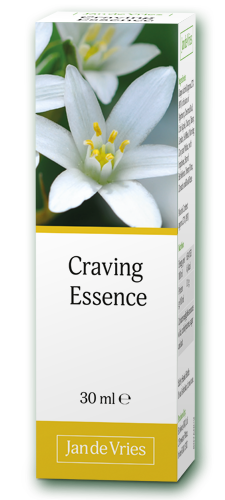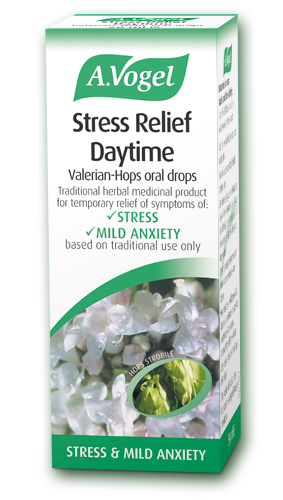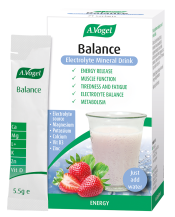An introduction to food cravings
Firstly, I should explain that cravings are different from hunger. If your tummy is rumbling, your mouth is watering at the thought of your next meal and you would happily gobble up anything put down in front of you... in this case you’re probably just hungry.
Cravings on the other hand can be described as a strong desire for a particular type of food. You just can’t seem to banish thought of it from your mind and you desperately need to satisfy that urge! They can crop up at any time, even if you’ve already eaten.
Cravings can occur for a number of reasons: hormones and psychological factors are thought to have a part to play as well as nutrient deficiencies – your body may know better than you what it needs and you are the means of providing it!
Here I discuss some common cravings and what they might signify – it’s time to start understanding your body!
1. Sugar

Sugar cravings afflict many of us. However, as with many others, the underlying principles behind this craving generally aren’t well understood or appropriately managed by those affected – this can lead to further problems.
Sugar cravings can be a sign of wobbly blood glucose and guess what? More sugar will only make it worse. When you consume sugar your blood glucose spikes. In response to this, a hormone called insulin is released which clears the glucose from your blood, directing it into your tissues.
Refined sources of sugar (many processed foods and ‘white’ varieties of carbohydrates too) cause a particularly sharp spike in your blood glucose and insulin is promptly released in response to this. Insulin then works hard to clear the glucose quickly which causes the opposite effect in your blood, your glucose levels plummet! This can then triggers more cravings and so on.
A sudden crash in blood sugar also triggers the release of adrenaline from your adrenal glands in an attempt to compensate for insulin’s rash actions. Adrenaline acts to make more glucose available in the blood stream once more; drawing it from the liver where it is stored. The demand on your adrenal glands increases as this cycle continues and they eventually become tired, which means you could be at risk of adrenal fatigue.
In addition to this, the adrenaline-mediated stress response in your body can make you feel anxious and irritated. What else!?
There is actually something else... Over time your cells get tired of the extreme highs and lows and stop responding to insulin. This is called insulin resistance. Blood sugar levels soar as the actions of insulin are dampened and this state is a precursor to type 2 diabetes.
What can be done to help? 
Start by incorporating some chromium into your diet; brewer’s yeast is a particularly rich dietary source. Chromium is another helpful supplement option. This mineral helps to support the actions of insulin in regulating blood sugar. Finally, cinnamon can make a nice addition to many foods, and this spice is also thought to have favourable effects on blood sugar levels and insulin responses.
If you find you have craving for sweet treats, try swapping in some alternative sources of sugar instead. Have some fruit such as figs or passionfruit which are naturally sweet but also contain soluble fibre – this will help to slow the release of sugar into your bloodstream and avoid any extreme fluctuations.
Incorporating zinc into your diet can be useful too as this important mineral supports the production and actions of insulin. Look out for white spots on your fingernails as this can be a sign you are running low.
2. Carbohydrates – the refined, white type

Craving some pasta or a big stodgy white loaf? Refined carbohydrates are quickly broken down into sugar in the body so cravings may indicate some of the same problems associated with sugar cravings. However, there may also be more to it than that.
Interestingly, cravings for carbohydrates often go hand in hand with your mood.
Perhaps you’re feeling a bit down and you want some stodgy goodness in your life. Sound familiar?
The amino acid l-tryptophan is an important precursor to the feel-good hormone serotonin. L-tryptophan is found in good quality sources of protein such as eggs, oats, dairy, seeds and legumes – a list of foods generally losing in the protein vs. carbohydrate battle!
What is important to understand is that gorging on some carbs will cause a temporary increase in serotonin levels and mood. Great! No, not so fast. This feeling is short-lived and you are soon left feeling like you need some more...the vicious cycle continues and unbeknown to you, your serotonin levels are gradually spiraling into decline.
What can be done to help? 
In order to overcome this, ensure you are including plenty of l-tryptophan-rich sources into your diet in the first place. Don’t ditch the carbohydrates completely though, wholegrain carbs are rich sources of the B vitamins which also support your nervous system and mood.
It is important to mention that cravings for carbohydrates or sugar may also be a sign of a yeast overgrowth in your gut. If you suffer from digestive issues, fatigue or brain fog alongside your carbohydrate craving - this could be a sure sign of pesky yeast taking hold.
Try taking Molkosan which helps maintain a healthy gut environment and supports the growth of your good gut bacteria.
3. Carbs and fat

So, after discussing carbohydrate cravings... let’s now consider craving carbohydrates and fat together. Do you ever find yourself struggling to banish the thought of a big sticky donut, or a greasy pastry? There may actually be an explanation as to why foods containing both high levels of fat and carbohydrates are just so tempting! It seems your hormones and mood may again have a part to play.
The combination of fat and sugar can actually have quite a unique effect on your brain and trigger a reward response. As discussed, the consumption of carbs can increase the feel-good hormone serotonin. But, there is some evidence to suggest that when fat is added to the equation it can trigger the release of dopamine – a neurotransmitter associated with pleasure and reward. The association with these positive feelings and the consumption of fat-laden sweet treats is established and you may soon find yourself wanting more. Over time though, these pathways become dampened; your health suffers with the over-consumption of these foods but the positive feelings you once experienced are no longer as apparent.
What can be done to help? 
Try incorporating some omega-3 rich oily fish or flaxseeds into your diet as an alternative means of giving your dopamine levels a boost. In addition to diet, try taking part in activities which can trigger dopamine pathways, such as exercise. Then, if you are still really struggling to battle your cravings, try Jan de Vries Craving Essence to help you cope with not only the initial cravings, but also any additional feelings of self-disgust, guilt or dependence that can crop up later.
However, as much as you should consider these mechanisms, you sometimes need to pay closer attention to high sugar and fat cravings as they may actually be a sign of your body crying out for a calorie dense meal!
If you aren’t consuming sufficient calories, or require extra calories, for example in pregnancy, you may need to pay close attention to this craving. Try consuming some complex carbohydrates and some oily fish to up your calorie intake instead.
4. Salt

Salt cravings are one to watch out for. Very occasionally it could mean your body is genuinely craving sodium, for example, someone who is on an extreme raw food diet will have a high potassium diet and may need some sodium to achieve better electrolyte balance. However, nowadays the chances of us requiring more sodium aren’t very high as salt is so prevalent in the western diet.
A salt craving is more likely to signal an issue with your adrenal glands.
Your adrenal glands are responsible for releasing a number of hormones including one called aldosterone. Aldosterone is responsible for achieving water and electrolyte balance in your body. If your adrenals are tired and malfunctioning from over-use (this is a common result of chronic stress and is called adrenal fatigue) aldosterone may not be able to exert its effects. You might find you start craving salt in a bid to balance sodium levels. 
What can be done to help?
Rather than attempting to consume more salt, addressing the adrenal fatigue is important; take positive steps to manage your stress through diet and lifestyle. Stress and the over-consumption of caffeine are important risk factors to consider. A remedy such as Stress Relief Daytime might be useful in this instance.
5. Cheese

Constantly scouring the fridge for some cheese? We may be able to explain why. Cheese is a high in fat with it making up a good third of your average slab of cheddar. Craving cheese may actually signal a fatty acid deficiency (most likely omega-3) and symptoms to look out for include: dry or scaly skin, small lumps on the back of your arms, dry eyes and excessive ear wax.
What can be done to help? 
Rather than reaching for the cheese, try to incorporate some extra sources of omega-3 fatty acids in your diet and aim to include more oily fish, flaxseeds chia seeds and walnuts. Considering your digestion may also be sensible too as we need optimal digestive functions to break down and make use of the fats we eat. Use a remedy such as Digestisan if you think this is the case which combines extracts of artichoke, dandelion and boldo.
Cheese and cravings for other dairy products could also signal a calcium deficiency so be sure to incorporate lots of leafy greens and fish into your diet as they are rick sources of this important mineral. Our Balance Mineral Drink is also a go to if you feel you need a top up.
6. Chocolate

Chocolate is another common craving, especially in you women, but why?
Chocolate cravings can be a sign of a magnesium deficiency. Cocoa powder and cacao (the raw form of chocolate) are particularly high in magnesium. This may explain cravings for good quality dark chocolate in particular, which have a higher percentage of cocoa than your average milk chocolate.
In the lead up to your period or during the menopause, women are more at risk of being deficient in magnesium, is it a coincidence that this is when you often crave chocolate the most? I think not.
What can be done to help? 
Try incorporating lots of wholegrains, beans, nuts, seeds and green leafy veg into your diet to get your magnesium fix instead.
Another important consideration is that chocolate often has that troublesome combination of fat and carbohydrates which you can so easily succumb to; it falls into that pesky category of foods which can temporarily make us feel good. You must try to remind yourself that these feelings are short-lived and we should look at the bigger picture to try and understand what our body really needs.
Finally, topping up your magnesium levels with the help of Balance Mineral Drink could also help curb and tricky cravings.
7. Crunching Ice

Not quite as common, but sometimes people have cravings for substances that have very little nutritive value and can include ice, coal, chalk or even sponges! This is known as ‘pica’. Pica cravings are often thought to be linked to an iron deficiency in many cases (not always though) and cravings for red meat may also be apparent. 
Exactly why this happens isn’t well understood but low iron is becoming more readily considered as a cause and it may well be a rather confused, last-ditch attempt from your body to obtain some nutrients. Pica is often apparent during pregnancy where the risk of becoming anaemic is more common.
What can be done to help?
Try to incorporate lots of leafy greens and beans into your diet and perhaps take a trip to your doctor to get your iron levels checked if you commonly feel the urge to chow down on some ice cubes.
So, what’s the general advice?
Although there are theories existing as to why specific cravings happen as I’ve described, sometimes they just aren’t that easy to figure out.
Cravings don’t always signal a specific deficiency, the body may be confused and you crave something that wouldn’t actually be of much benefit to you, instead just empty calories that could make the root of your problem even worse! So pay attention to cravings and try your best to decipher what your body may be trying to tell you. Take a trip to your doctor if you are in any doubt.
General advice from me would be to drink plenty of water – sometimes feelings of thirst can be mistaken for hunger or cravings so have a good glug and see how you feeling. Adopting a nutrient-packed diet with plenty of fruit, vegetables, oily fish and wholegrains is recommended to help keep cravings under control as much as possible.
As I’ve also discussed, sometimes cravings may also be linked to your mood so make sure you take some time out to take part in activities you enjoy, which will help distract you from that big sticky bun calling your name.
Originally published on 13/09/17, updated on 22/01/19





 Looking for our products in a store near you?
Looking for our products in a store near you?


